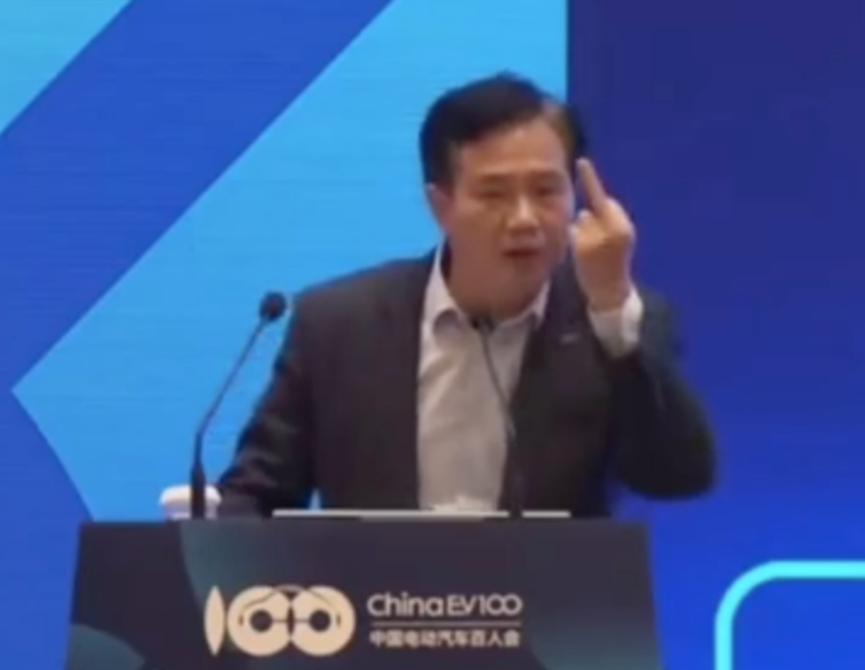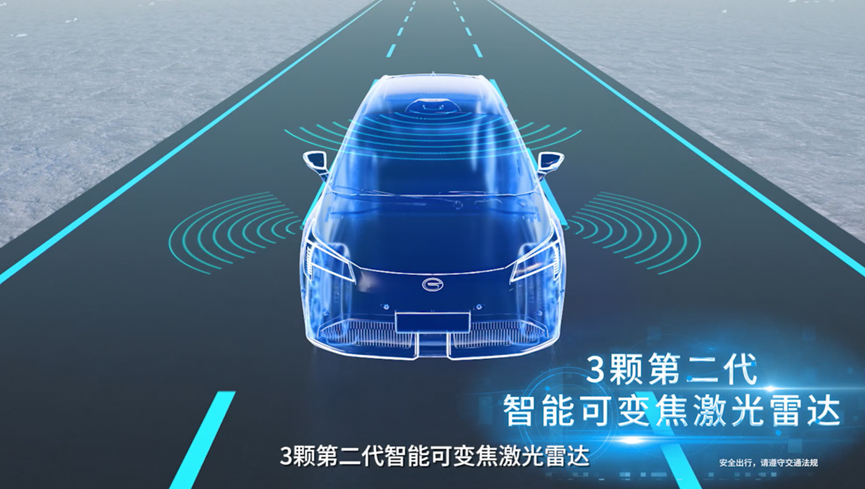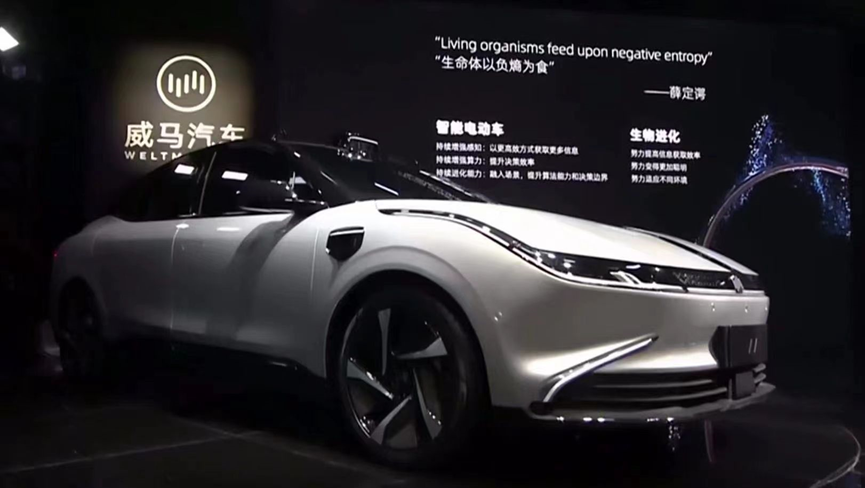Author: LYNX
Compared to CES 2022, which is in full swing in the United States, the new energy vehicle industry in China at the beginning of the year seems to be relatively calm.
Apart from the routine release of 2021 sales figures by domestic manufacturers during the New Year period, there don’t seem to be many exciting new cars or technologies.
Do you remember what the hottest topic in the industry was at the beginning of 2021?
Yes, it was “electric vehicle range of 1000 kilometers”.
At that time, on 2020 NIO DAY, NIO unveiled its first pure electric sedan, the ET7. Apart from cutting-edge new technologies such as lidar and over a thousand TOPS supercomputing power, what really captured the hearts of actual consumers was the 1000-kilometer-long range supported by a 150 kWh battery pack.
Subsequently, the topic of “electric vehicle range of 1000 kilometers” remained hot, with many manufacturers announcing that they were developing electric vehicles with 1000 kilometers of range.
The climax of the topic was sparked by the promotion poster released by GAC Aion below, featuring attention-grabbing phrases such as “80% charged in 8 minutes” and “1000 kilometers of NEDS range without waiting until next year.”
This instantly ignited public opinion and caused a sharp rise in the stock prices of GAC Group.
Next, a war of words broke out among the industry leaders:
It began with Chinese Academy of Sciences academician and vice-chairman of the China EV 100 council Ouyang Minggao speaking at the China EV 100 Forum, saying, “If someone tells you that this car can run 1000 kilometers, be fully charged in a few minutes, is very safe, and has very low costs, then, in terms of current technology, he must be a liar.”Here’s the translated English Markdown text preserving the HTML tags:
During a forum, Ge Huinan, the general manager of Guangqi Aion, responded to controversies by saying that “there will definitely be a car with a mileage of 1000 kilometers and fast charging technology in 2021. The battery can be charged in 8 minutes to reach a mileage of 1000 kilometers, theoretically.”

More than a year has passed, and the previous controversies have gradually been forgotten by people. However, I believe that many people, like me, still have a curious attitude, wanting to see whether Guangqi Aion’s claim of “a 1000-kilometer mileage electric car in 2021” will come true.
Well, it seems that Guangqi has fulfilled its promise after all, for yesterday, the Aion LX Plus with a maximum range of 1008 kilometers under CLTC conditions finally hit the market.

A Long-range Journey Comes with a High Price
Those who are familiar with Guangqi Aion may have the impression that this is a company with somewhat “radical” technical path and marketing strategies. A few years ago, when battery technology was not as safe as it is today and electric vehicle mileage did not commonly exceed 500 kilometers, the AION S was the first vehicle to try out 811 batteries and claimed a range of over 600 kilometers. However, later negative issues such as the exaggeration of range, spontaneous combustion, and battery lock incidents continued to surround this model.

If you watched the Aion LX Plus launch event last night, you might have felt a little impressed with the “once-again” boldness of Guangqi Aion. Whether it’s using a virtual image as the host of the online event and promoting itself as the “world’s first metaverse cloud launch event,” or using an array of eye-catching “high-tech” vocabulary, there is a feeling of “amazing but…”.

Moreover, the event revealed some obvious shortcomings about the vehicle. For instance, the official emphasized multiple times that the vehicle’s 0-100 km/h acceleration time was 2.9 seconds.
 But whether it is in data tables for the media or on the official website of GAC AION, the fastest 0-100 km/h acceleration of AION LX Plus is 3.9 seconds…
But whether it is in data tables for the media or on the official website of GAC AION, the fastest 0-100 km/h acceleration of AION LX Plus is 3.9 seconds…

But let’s get back to the topic. If a consumer is “very anxious” about the range of electric vehicles and wants to buy a pure electric vehicle with a range of 1,000 kilometers, how much does it cost?
The answer given by GAC AION using AION LX Plus is: RMB 459,600.

AION LX Plus has four models: 80 Intelligent Elite Edition, 80D Flagship Edition, 80D Max Edition, and Thousand Miles Edition, with prices of RMB 286,600 (after subsidies), RMB 329,600, RMB 409,600, and RMB 459,600, respectively.
It is worth mentioning that unlike the top models of common electric vehicles, both the entry-level version and the most expensive Thousand Miles Edition of AION LX Plus are single-motor and two-wheel drive, with a 0-100 km/h acceleration time of 7.8 seconds. The two models in the middle price range are dual-motor four-wheel drive, with a faster 0-100 km/h acceleration time of 3.9 seconds, but the cost is the CTLC cruising range of only 600 kilometers.

Apart from sacrificing performance for range by using a single motor, the most effective way to increase the range of electric vehicles is still to equip them with larger capacity batteries.
This is perfectly demonstrated on the Thousand Miles Edition of AION LX Plus, which is equipped with a power battery with a capacity of an amazing 144.4 kWh. This is probably the main reason for its exorbitant price.
Of course, joking aside, the power battery on the Thousand Miles Edition of AION LX Plus is the result of the wisdom and hard work of GAC AION engineers—the Sponge Silicon Negative Electrode Battery Technology.

Putting larger batteries on electric vehicles for longer range sounds easy, but it is actually very difficult. Under the same volume, not only the energy density of the battery needs to be improved, but also the weight of the battery pack needs to be considered, which will have an impact on the range.In order to increase the energy density of batteries, manufacturers have generally made efforts in the positive electrode materials of batteries. Taking ternary lithium as an example, the proportion of nickel element, which is related to energy, is increased in the positive electrode material of ternary lithium. The “8” in the 811 battery refers to the proportion of nickel element exceeding 80%.
However, although increasing the amount of nickel in the positive electrode can bring more energy to the battery, it can also cause instability in the positive electrode structure. This is the root cause of the 811 battery’s easy ignition.
In addition to increasing the total energy of the battery by increasing the nickel content in the positive electrode, another technical path is to increase the energy density of the negative electrode, allowing the negative electrode material to “store” more lithium ions to enhance the energy of the battery.
Currently, almost all lithium battery negative electrode materials are graphite, which is carbon. However, the energy that this negative electrode material can accommodate has encountered a bottleneck. The industry is generally trying to use silicon negative electrode materials that can store more energy to replace it.
The lithium ion capacity of silicon negative electrode materials can theoretically reach more than 10 times that of graphite. In other words, for the same battery, if silicon is used as the negative electrode, the energy can exceed that of a graphite battery by 10 times.
However, as an electrode material, silicon has a fatal flaw, which is its expansion rate. Graphite expands no more than 10% during battery charge and discharge cycles, while silicon can expand up to 360%, which is unsafe to imagine.
Guangzhou Automobile Group’s self-developed technology for sponge silicon negative electrode sheets accurately adjusts the ratio of carbon to silicon in the negative electrode of the battery so that it can have the advantages of a high-capacity silicon negative electrode while using the stability of graphite to restrain the expansion of silicon.
This technology covers materials, binders, electrodes, and production and manufacturing fields, including “nano composite silicon technology”, “self-repairing adhesive technology”, “gradient composite coating technology” and other technologies.
These technologies can make the silicon negative electrode inside the battery soft and flexible like a sponge, limiting and buffering the expansion and contraction of silicon during charging and discharging, preventing it from cracking. At the same time, like a sponge absorbing water, it enables the silicon negative electrode to exert the advantage of high capacity and store more energy.Based on this technology, the energy density of the power battery pack installed in the AION LX Plus Thousand Miles Edition has reached 205 watt-hours per kilogram. Under the same amount of electricity, the volume of the power battery cell has been reduced by 20% and the weight has been reduced by 14%.
All of these ultimately support the endurance performance of 1,008 kilometers (626 miles) under CLTC working conditions.
The question is, the technology is indeed ahead of the game, but in the face of a price tag of 450,000+ RMB, how many consumers will actually pay for a range of one thousand kilometers?

Can a Thousand Miles and Smart Driving Coexist?
A range of one thousand kilometers is not the only highlight of AION LX Plus. At the launch event, the officials repeatedly emphasized that the positioning of AION LX Plus is “smart driving for a thousand miles.”
Now that we have achieved a range of one thousand kilometers, how is “smart driving” reflected?

The answer is not surprising — LIDAR.

However, in the related introductions, GAC AION still played a lot of word games. Here, let us first talk about the highlights and then the criticisms.
Specifically, the AION LX Plus is equipped with 35 high-performance sensors, including 6 millimeter-wave radars, 12 ultrasonic radars, 8 autonomous driving high-definition cameras, 4 surround-view cameras, 2 independent high-precision positioning modules, and 3 second-generation intelligent variable-focus LIDARs.

Among them, the most eye-catching LIDAR, one is installed on the roof of the car, and the other two are installed on the top of the front fenders on both sides of the car body, which can realize cross-overlap detection with a field of view of 300° in front of the car, and the farthest detection distance can reach 250 meters.
In congested urban scenarios, the environmental perception refresh rate of this LIDAR can be adjusted dynamically between 10-30Hz, with a millisecond-level detection frequency, and can quickly identify sudden situations such as cutting in and ghost vehicles; in high-speed scenarios, it can achieve intelligent control with vertical resolution between 0.05-0.2°, accurately capturing distant cones, pits, and bumps, predicting risks from long distances, and slowing down or changing lanes in advance.
Beside those sensor hardwares, GAC Aion equipped AION LX Plus with a smart driving computing platform with 200 TOPS of computing power to achieve various assisted driving functions.

Here are three main assisted driving functions of AION LX Plus:
1. Highway NDA: This function is basically the same as the high-speed navigation assistance function already installed in Tesla, XPeng and other vehicle models. In a closed highway, the vehicle can automatically accelerate, lane change, overtake, and enter/exit ramps based on the navigation information and combined with high-precision maps.
2. Long-distance Valet Parking & Self-parking with High-Precision Map: Similar to the memory parking function already equipped in XPeng and WmAuto models, after recording the route once, six fixed parking places or passing through parking places can be parked autonomously through mobile phone or vehicle system, and the length of memory route is up to 150m. The self-parking with high-precision map can even enable the vehicle to find the parking spot and park automatically.
3. City NDA: In urban traffic conditions, it can achieve straight-through intersection, autonomous lane change overtake, red and green light turn at intersection, U-turn and roundabout passing and other functions—when I saw this, I was shocked, XPeng is still testing the City NGP, it turns out that GAC Aion has done it first?

What about the City NDA which might be an OTA upgrade function in the future? With this question, I went to the official website of GAC Aion to check the vehicle configuration table.
As it turned out, if you do not check, you will not know. I was shocked when I checked the vehicle configuration table. There was no relevant description of City NDA in the configuration table, only “City Road Smart Driving Assistance System”, and there was no symbol “*” indicating that it needs OTA upgrade.
Even more surprising is that all the above-mentioned sensor configurations and assisted driving functions are not equipped in the 1008km version: There is no LIDAR, no smart driving assistance systems, and even the millimeter wave radar that comes standard with the entry-level version is not installed.
 Therefore, it is impossible to buy an AION LX Plus with both a thousand-mile range and a “full option” autonomous driving assistance system as claimed by GAC Aion.
Therefore, it is impossible to buy an AION LX Plus with both a thousand-mile range and a “full option” autonomous driving assistance system as claimed by GAC Aion.
To own an AION LX Plus equipped with three LiDAR, you can only choose the 80D Max version with a price of 409,600 yuan and a range of 600 kilometers.
In addition to the range and autonomous driving, there is an interesting line of text at the bottom of the ADiGo intelligent cabin image that was emphasized by the official at the launch event.

Another noteworthy detail is that GAC Aion emphasized the “second generation” when promoting these three LiDAR.
Does this refer to the second generation LiDAR independently developed by GAC Group? The answer is no.

After some internet searching, we found that the supplier of the AION LX Plus LiDAR is RoboSense, a company that also supplies LiDAR to other domestic automakers.

Therefore, it is not difficult to understand why the layout of the LiDAR on the AION LX Plus is so familiar. Last October, the brand-new electric sedan WEY M7 unveiled by WM Motor also used this company’s LiDAR solution.

So, the question is, with the AION LX Plus 80D Max equipped with three RoboSense LiDAR already priced at the 400,000 yuan level, how will WM Motor price its M7, which has been promoting “technology for all”?
Conclusion
According to GAC Aion’s official data, its sales exceeded 120,000 units in 2021, a year-on-year increase of 119%. However, according to the data from China Association of Automobile Manufacturers, its main selling model is still the AION S with a price range of 150,000 yuan to 180,000 yuan.
 As a translator for the automotive industry, I am responsible for English translation, spelling check, and wording modification. The following is an improved version of the Chinese text in Markdown format while preserving the HTML tags.
As a translator for the automotive industry, I am responsible for English translation, spelling check, and wording modification. The following is an improved version of the Chinese text in Markdown format while preserving the HTML tags.
It cannot be denied that the AION S has been largely consumed by the B2B ride-hailing market, as many readers may have noticed.
Therefore, it remains to be seen whether the AION LS Plus, which prices range from 270,000 to 460,000 RMB, can provide any significant boost to GAC Aion’s sales.

Behind the impressive specifications such as a 1000-kilometer battery range and three lidar sensors lies the continuous investment in R&D and the relentless efforts of engineers at GAC Group. We can glean from these technologies the prospects of future intelligent automobiles.
However, the same question persists: what is the real-world significance of costly technological leaps that disregard actual consumer demands?
This is a question we have already seen with the Lynk & Co 01 Huawei Hi Edition, and now we have one more example in the AION LX Plus.
This article is a translation by ChatGPT of a Chinese report from 42HOW. If you have any questions about it, please email bd@42how.com.
